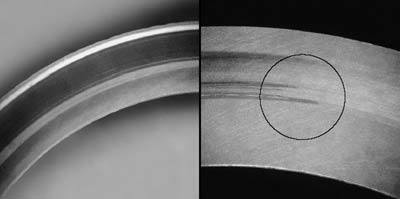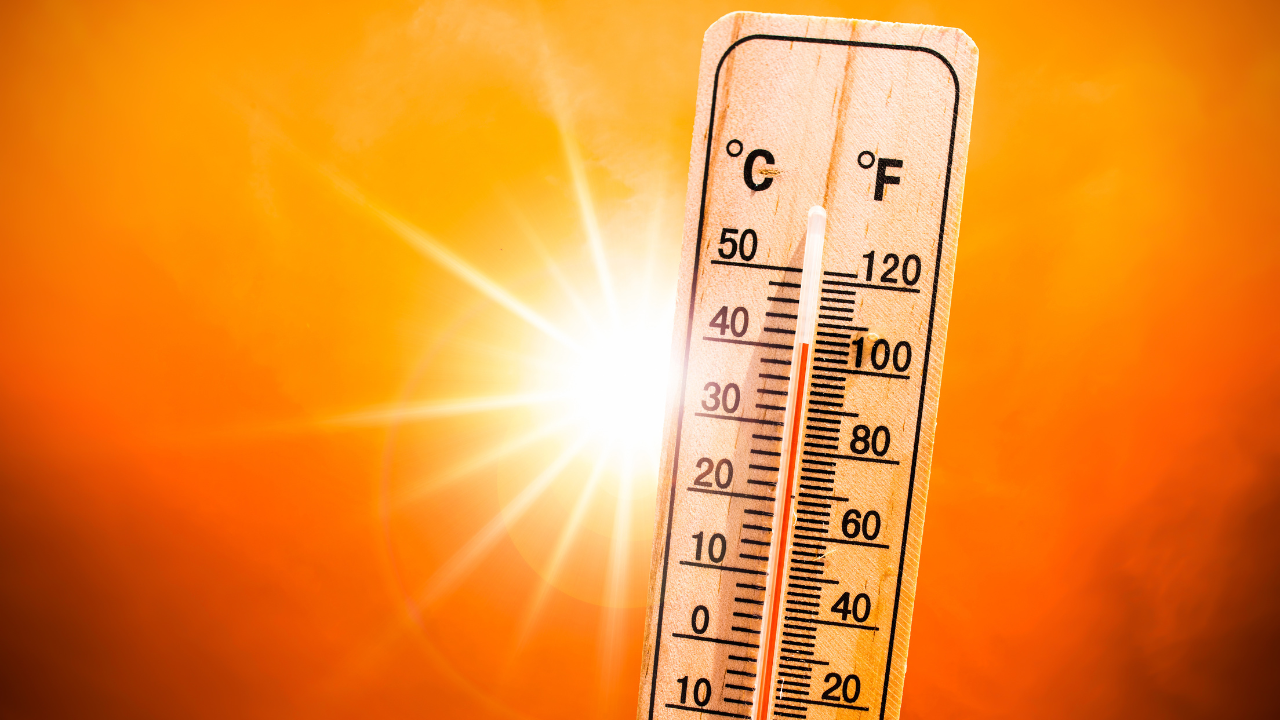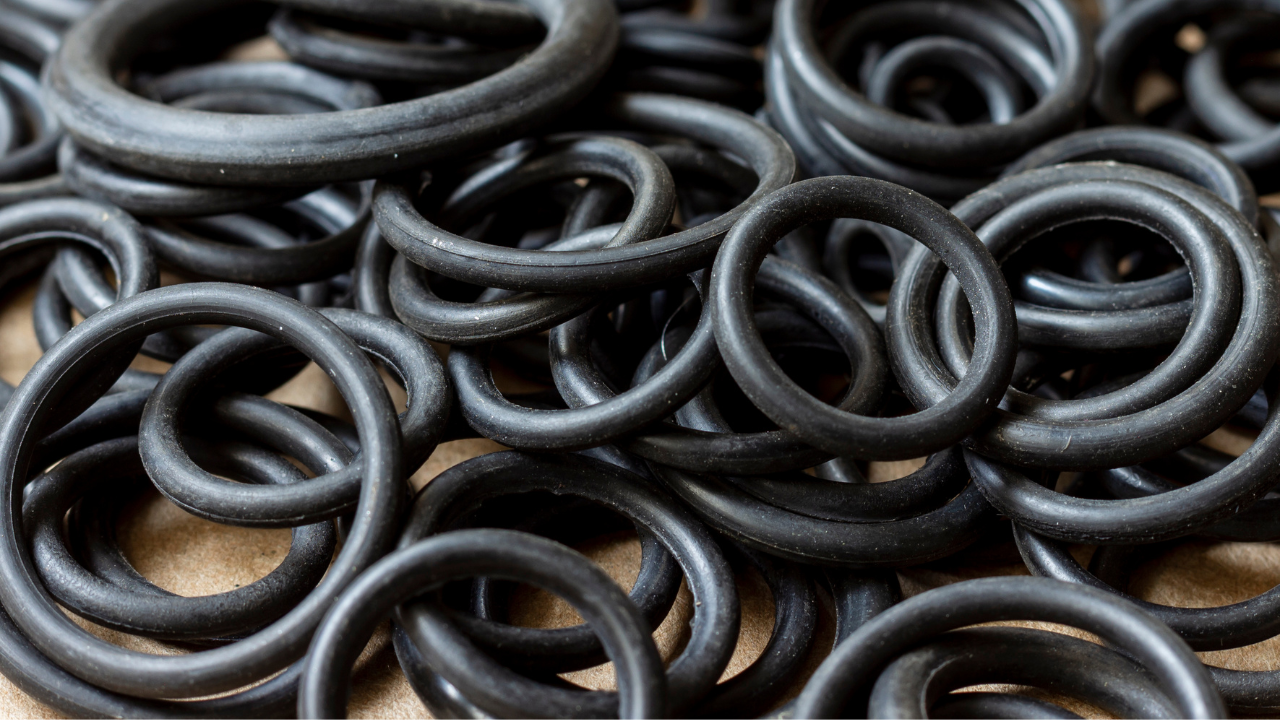Troubleshooting Mechanical Seals | Even/Uneven Wear Track | Part 4
Chesterton
Even/Uneven Wear Track

| EVEN WEAR TRACK | UNEVEN WEAR TRACK |
SYMPTOMS:
- Even/uneven wear track
CAUSES:
- Even wear on a seal face usually indicates good contact between the mating seal rings
- Uneven wear on a seal face indicates:
- Distortion of the seal ring due to over tightening, clamping, or excessive pressure
- Distortion due to insufficient gland support
- Misaligned seal rings in a split seal
- Improperly stress relieved component
FAILURE MODES:
- Misinstallation
- Quality/design related issue
SOLUTIONS:
- Review installation techniques/instructions
- Check/reduce torque and evenly tighten gland bolts
- Review operating conditions
- Reduce torque and evenly tighten gland bolts
This is a 9 part series. Click to view each article: 1 : 2 : 3 : 4 : 5 : 6 : 7 : 8 : 9
Related Articles

Causes of Overheating in Cartridge Mechanical Seals
Too much heat can cause multiple problems with cartridge mechanical seals. Some heat problems are not seal design or seal installation related.
Too much heat can cause multiple problems with cartridge mechanical seals. Some heat problems are not seal design or seal installation related.

How Can I Extend the Performance Range of Standard Cartridge Mechanical Seals?
In today's global environment, the "one size fits all" approach is used for so many products that we expect it to apply to just about everything. In the mechanical seal industry, one problem with that philosophy is the definition of the word all. Mechanical seals must live in literally every environment under the sun-from extreme hot to extreme cold, wet to dry, solid to gas, acidic to caustic and so on. Until relatively recently, a vast variety of cartridge mechanical seals were needed to accommodate these pump applications.
In today's global environment, the "one size fits all" approach is used for so many products that we expect it to apply to just about everything. In the mechanical seal industry, one problem with that philosophy is the definition of the word all. Mechanical seals must live in literally every environment under the sun-from extreme hot to extreme cold, wet to dry, solid to gas, acidic to caustic and so on. Until relatively recently, a vast variety of cartridge mechanical seals were needed to accommodate these pump applications.

The Process of Troubleshooting Mechanical Seals - Part 1
The 9 articles in this series will outline common issues with mechanical seals, how to notice them, and troubleshooting tips. The series addresses: wide wear track, centered/miscentered, even/uneven wear track, scoring, chipping, coking, heat cracking or checking, and blistering.
The 9 articles in this series will outline common issues with mechanical seals, how to notice them, and troubleshooting tips. The series addresses: wide wear track, centered/miscentered, even/uneven wear track, scoring, chipping, coking, heat cracking or checking, and blistering.

Troubleshooting Mechanical Seals | Wide Wear Track | Part 2
Part 2 of 9 on Troubleshooting Mechanical Seals: Wide Wear Track - symptoms, causes, failure modes, and solutions.
Part 2 of 9 on Troubleshooting Mechanical Seals: Wide Wear Track - symptoms, causes, failure modes, and solutions.

Troubleshooting Mechanical Seals | Centered/ Miscentered | Part 3
Part 3 of 9 on Troubleshooting Mechanical Seals: Centered/Miscentered - symptoms, causes, failure modes, and solutions.
Part 3 of 9 on Troubleshooting Mechanical Seals: Centered/Miscentered - symptoms, causes, failure modes, and solutions.

Troubleshooting Mechanical Seals | Scoring | Part 5
Part 5 of 9 on Troubleshooting Mechanical Seals: Scoring - symptoms, causes, failure modes, and solutions.
Part 5 of 9 on Troubleshooting Mechanical Seals: Scoring - symptoms, causes, failure modes, and solutions.

Troubleshooting Mechanical Seals | Chipping | Part 6
Part 6 of 9 on Troubleshooting Mechanical Seals: Chipping - symptoms, causes, failure modes, and solutions.
Part 6 of 9 on Troubleshooting Mechanical Seals: Chipping - symptoms, causes, failure modes, and solutions.

Troubleshooting Mechanical Seals | Coking | Part 7
Part 7 of 9 on Troubleshooting Mechanical Seals: Coking or Crystallized - symptoms, causes, failure modes, and solutions.
Part 7 of 9 on Troubleshooting Mechanical Seals: Coking or Crystallized - symptoms, causes, failure modes, and solutions.

Troubleshooting Mechanical Seals | Heat Checking or Cracking | Part 8
Part 8 of 9 on Troubleshooting Mechanical Seals: Heat Cracking or Heat Checking - symptoms, causes, failure modes, and solutions.
Part 8 of 9 on Troubleshooting Mechanical Seals: Heat Cracking or Heat Checking - symptoms, causes, failure modes, and solutions.

Troubleshooting Mechanical Seals | Mechanical Seal Blistering | Part 9
Part 9 of 9 on Troubleshooting Mechanical Seals: Mechanical Seal Blistering - symptoms, causes, failure modes, and solutions.
Part 9 of 9 on Troubleshooting Mechanical Seals: Mechanical Seal Blistering - symptoms, causes, failure modes, and solutions.



